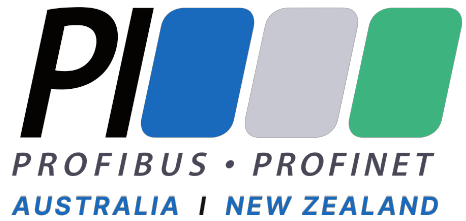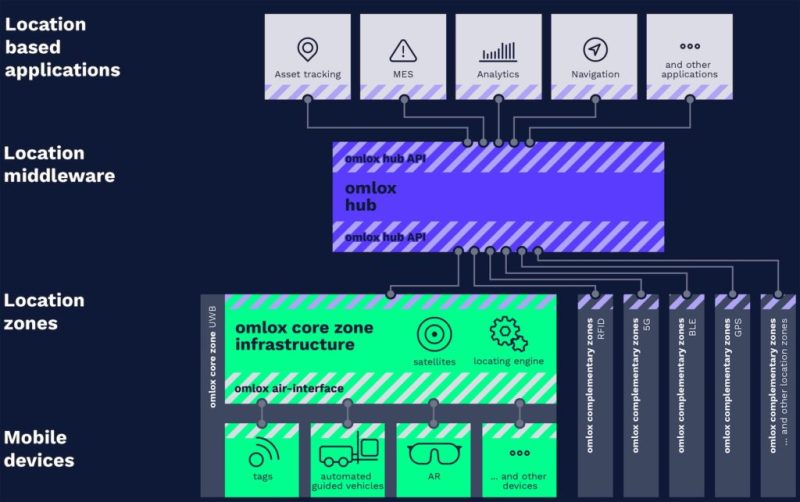Exact Location Tracking for AR via omlox
Augmented reality (AR) has been around since the 1970s when it was first introduced in pilot helmets and general industrial purpose since 1990. The technology consists superimposes computer graphics onto a user’s real-world perspective. The computer image could be real, entirely simulated or potentially exist in the past/future. Superimposing this information on the current perspective of the user enables seamless target/actual comparisons e.g digital plan on existing inventory.
Technological advancements have enabled widespread adoption, e.g., 150,000 AR glasses were sold in 2016, and 22.8 million in 2021. Wireless sensor technology is set to play a crucial role in IoT and Industry 4.0. Also, 5G and 6G will enable cloud-based AR with small and economical end-user devices. The AR display could use different types of devices, namely smart phones, tablets, smart glasses, or even projection-based devices.
The other crucial aspect is the localization of the display, where the latter’s 3D coordinates are used to ensure the spatial accuracy of the superimposed image on the real-world view. Also, of high importance, is the orientation and motion of the display.
Indoor Positioning for Augmented Reality Applications
Outdoor positioning is done by GNSS (Global Navigation Satellite System) but is limited to outdoor scenarios. Indoor positioning is dependent on signal strength and radio signals, e.g. WLAN (AP), or Bluetooth beacons provided there are low accuracy requirements. Higher than 1 meter accuracy can be achieved using Ultra Wide Band (UWB). Other methods use ultrasound or light modulation. Dynamic (PDR) or Dead Recon-ing could also be used which uses a combination of compass, pedometer, acceleration, and rotation angle sensors. Location trackiung using 3D point clouds or Simultaneous Localization and Mapping (SLAM) can be done by LiDAR or cameras.
AR Tracking Libraries and Frameworks
On the one hand, tracking program libraries could either be closed and paid solutions which may or may not supply their own software development kits (SDKs) e.g. Azure Custom Vision, CDMTracker, VisionLib, Vuforia, Wikitude, etc. On the other hand, some popular opensource libraries are: (ARToolkit, OpenCV, AR.js, DroidAR.etc)
Complex visualizations such as a Building Information Model (BIM) can only be performed by outsourcing computational processes. ARTwin project partner Holo-Light contributes its XR streaming solution ISAR. This enables support for big data content such as graphics-intensive 3D objects or 3D CAD models. ARTwin offers broad use-cases for the smart factory, for example, planned pipelines, machines, and assemblies can be visualized and manipulated directly at their intended destination.
Standardized Real-Time Location by omlox – Basis for Industry 4.0
Real Time Location Systems (RTLS) make the use of machines and equipment more efficient, safe, and economical. Historical hindrances to RTLS data acquisition have been:
- Lack of interfaces suitable for industrial use
- Lack of hardware interoperability
- High costs for the infrastructure and the required locating transponders
- High costs for installation and integration
- Lack of standards with regards to the data structures used
- Insufficient visualization
The revolutionary and innovative open locating standard omlox greatly alleviates the aforementioned issues. It transfers all positioning data into a uniform coordinate system as well as enables open self-locating indoors. It is maintained by the non-profit industrial association PROFIBUS&PROFINET International (PI), Karlsruhe, Germany. The association comprises 1,700 members worldwide, in 27 regional associations, which defines standards in a pre-competitive and vendor-neutral manner.
omlox provides a standardized so-called “air-interface” within the UWB based central locating zone (omlox core zone). The standardized air-interface enables interoperability between hardware components within the core zone. The interfaces between the locating applications and the locating zones to the “omlox hub”, a middleware that unifies all locating data into one coordinate system, is standardized by the omlox hub API. This decouples software applications from RTLS technologies and their vendors. It aggregates location data and puts it into a unified data format. This simplifies the integration of location technologies into applications and enables any combination of technologies and vendors.
omlox prevents vendor lock-in and allows users to combine different suppliers for either different zones e.g., indoor vs outdoor, or even different suppliers in the same locating zone via the air-interface. Significant improvements are achieved in terms of reduced and faster infrastructure deployment e.g., software, database, training, and administrative costs. In parallel, the omlox core zone provides very accurate and fast locating data, being impervious to metallic obstruction and lack of direct line-of-sight.
Opportunities for AR/VR/XR Through omlox
omlox allows real-time and absolute RTLS data for AR devices, opening up a multitude of new use-cases. Cross-vendor usability within the omlox core-zone means each manufacturer can implement its own location-based services based on the standardized interface. Via the omlox hub API, the content for AR is delivered, and via the omlox air-interface the absolute self-positioning of the AR device can be done in seconds.
This indoor self-location complimented by omlox can allow navigation data to be displayed on head-up displays or AR devices. In order to achieve the desired smooth user-experience, the AR devices will preferably do a sensor-fusion of the omlox absolute self-location with the fast and accurate relative tracking which is typically in use in today’s AR displays. Therefore, localization happens instantly after switching on (omlox core zone) and the AR application can consume relevant real-time movement data of its surrounding via the omlox hub. Context-related sensory data could further enhance the user experience.
XR Streaming ISAR SDK Combines Tracking with AR
One well known limiting factor for AR is the large amount of data generated and needed to be processed. This is compounded by the limited processing capability of mobile devices and smart glasses, for example. omlox effectively bypasses this bottleneck using ISAR. The latter is the XR streaming solution provided by Holo-Light. The ISAR SDK enables remote computing for AR and streaming directly to AR displays via selected and secure cloud servers. This SDK can directly be integrated with an AR App. The result is real-time streaming of AR content such as 3D machine and live location data in a high level of detail and complexity.
XR streaming outsources computational load to remote central servers. The central servers are integrated into the omlox core zone with HoloLens 2 AR glasses, enabling optimal performance and even provisioning of other devices like Android and iOS devices with ease.
Among other things, security and privacy is always of major concern. Which is why the complete streaming of AR applications eliminates the need to store privacy-sensitive data at location. The end-user has full control over where and how their tracking data is located. “The combination of omlox indoor navigation with the AR application revolutionizes spatial visualization: no need to attach QR markers, no complex and cost-intensive preparations of the hall and a positioning accuracy that is significantly higher than comparable systems,” says Eberhard Wahl, PI WorkingGroup leader, omlox Use-Cases, and CEO of TRUMPF Tracking Technologies GmbH, provider of omlox core zone infrastructure.
Access the full Whitepaper (German language)
Provided by:
- Prof. Dr. Stefan Knauth (HFT Stuttgart)
- Prof. Dr. Ing. Dieter Uckelmann (HFT Stuttgart)
- Prof. Dr. Ing. Volker Coors (HFT Stuttgart)
- Jonas Görpl (VDC)
- Florian Haspinger (CEO Holo-light)
- Eberhard Wahl, CEO TRUMPF Tracking Technologies GmbH
Contact us for more information.



